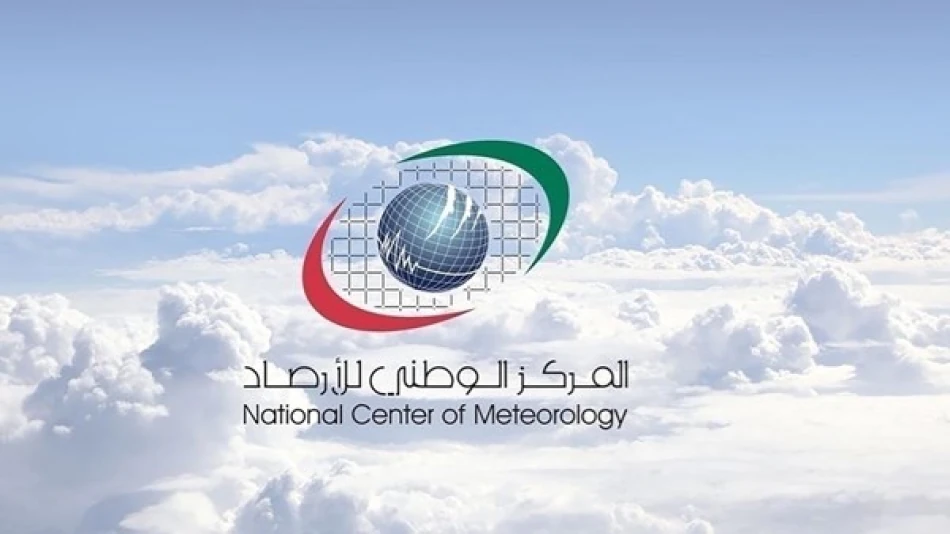
National Weather Service Forecasts Conditions for Friday through Monday
UAE Braces for Four-Day Weather Disruption as Tropical Convergence Brings Heavy Rains and Dust Storms
The UAE's National Centre of Meteorology has issued a comprehensive weather warning for July 25-28, predicting significant atmospheric disturbances across eastern and southern regions. The forecast combines heavy rainfall, potential hail, thunderstorms, and dust storms—a weather pattern that could disrupt daily operations and test the country's infrastructure resilience during peak summer months.
Meteorological Forces at Play
The anticipated weather system stems from the southward movement of the Intertropical Convergence Zone (ITCZ), a critical atmospheric phenomenon that typically brings the most intense weather patterns to the Arabian Peninsula. This convergence zone, combined with advancing surface and upper-level low-pressure systems from the south, is creating ideal conditions for severe weather formation.
The meteorological setup involves moist air masses flowing from both the Arabian Sea and the Sea of Oman toward the UAE, coinciding with daytime temperature spikes and the orographic effects of the eastern mountains. This combination creates a perfect storm scenario for cumulus cloud development and associated weather hazards.
Expected Weather Impacts
Precipitation and Storm Activity
The forecast calls for varying intensity rainfall accompanied by small hail, lightning, and thunder across eastern and southern regions, with potential extension into interior areas. This rainfall pattern, while beneficial for water resources, poses risks to urban drainage systems and outdoor activities during what is typically the UAE's driest season.
Wind and Visibility Concerns
Wind patterns will shift from southeasterly to northeasterly directions, with speeds ranging from moderate to occasionally strong, particularly during cumulus cloud formation. These winds will likely generate dust and sand storms, significantly reducing horizontal visibility—a critical concern for aviation and road transportation.
Infrastructure and Economic Implications
The timing of this weather system presents particular challenges for the UAE's economy. July represents peak summer tourism season, with outdoor events, construction activities, and aviation schedules potentially facing disruptions. The country's advanced weather monitoring systems and infrastructure preparedness will be tested, particularly in rapidly developing eastern regions.
For the aviation sector, reduced visibility and wind shear associated with cumulus clouds could impact flight operations at Dubai International Airport and other regional hubs, potentially creating ripple effects across global travel networks.
Regional Weather Context
This weather pattern reflects broader atmospheric changes affecting the Arabian Peninsula during summer months. Similar ITCZ-driven weather systems have historically brought both benefits and challenges to Gulf states, with Oman and eastern Saudi Arabia often experiencing comparable conditions during the same periods.
The phenomenon underscores the UAE's position at the intersection of multiple climate zones, where desert conditions meet maritime influences from surrounding seas. Sea conditions remaining relatively calm in both the Arabian Gulf and Sea of Oman suggest the weather system's impacts will be primarily terrestrial rather than maritime.
Preparedness and Outlook
The four-day duration of the forecast period indicates a slow-moving weather system that could provide sustained impacts rather than brief, intense events. This timeline allows for adequate preparation by authorities and residents, though it also suggests prolonged disruption potential for outdoor activities and transportation.
The weather pattern represents a significant departure from typical July conditions in the UAE, where clear skies and minimal precipitation are the norm. The convergence of multiple atmospheric factors creates an opportunity to observe how the country's climate adaptation strategies perform under unusual stress conditions.
Most Viewed News

 Layla Al Mansoori
Layla Al Mansoori






